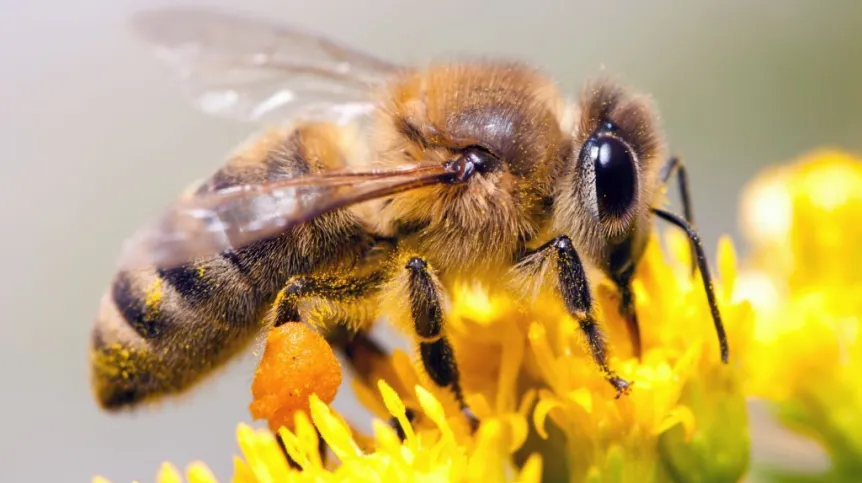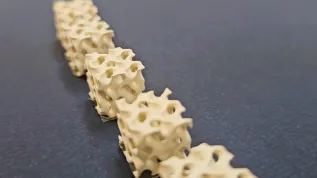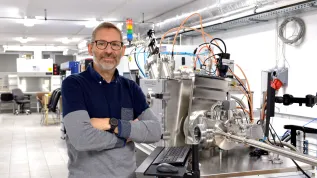
The Białystok University of Technology has obtained a patent for the preparation (and the method of obtaining it from the fungus found in the Białowieża Forest - Aurantiporus fissilis) that can be used in the treatment of American foulbrood, a dangerous infectious disease of bees. Work on the patent took over two years.
The patented solution was developed by a team of scientists led by Professor Sławomir Bakier, director of the Institute of Forest Science of the Bialystok University of Technology, who is also a beekeeper.
American foulbrood is one of the most dangerous bee diseases in the world, and the bacterium (Gram-positive Paenibacillus larvae) that causes it infects and kills bee larvae and pupae, adult bees are resistant to it.
In a press release Professor Bakier said: “The endospores of P. larvae have a unique vitality. In ambient conditions, they remain active for over 35 years, and the temperature of 100 degrees C kills them only after five days.
“In the European Union, there are currently no officially approved drugs to combat the disease that could be administered to infected bees at least in the initial period after detecting the disease.”
He added that in the initial phase of infection, the infected brood is removed and the bee colony is re-created; while in advanced disease the entire colony is usually burned, in some countries along with the hives.
The patented invention 'Composition and method of obtaining a composition for use in the treatment of American foulbrood in bees' enables the treatment of infected larvae instead of burning bee colonies along with hives.
“The essence of the invention is that we have found a fungus extract,” Bakier said. Among the 120 species of mushrooms tested by the scientist, six showed activity against the bacteria, the strongest in the case of Aurantiporus fissilis. The scientist created a medicinal composition consisting of natural substances, extracts from the fruiting body of this fungus.
According to the Bialystok University of Technology, the effectiveness of this composition in combating foulbrood bacteria turned out to be comparable to previously used antibiotics and polysulphides. The scientist emphasises that the study of the chemical composition has shown that the extract does not contain known antibiotics. He added that this is an impulse for further research to determine the mechanism of action on bacteria.
Aurantiporus fissilis is a fairly rare fungus, endangered in Poland. Researchers at the Institute of Forest Science of the Białystok University of Technology in cooperation with the Jagiellonian University have made attempts to grow this fungus in artificial conditions, and the research results are very promising.
At the conference organized two years ago, when work on the patent started, it was announced that the drug that could be created on the basis of this Aurantiporus fissilis composition (extracts from the fruiting bodies of the fungus) would be the first natural remedy for European and American foulbrood, without side effects or any harm to either bees or humans. It would also be a medicine that could be used during the normal functioning of bee colonies and as part of the prevention of this disease. Professor Bakier said that the existing foulbrood drugs: antibiotics and polysulphides, were not approved because they penetrated into honey and other bee products, making them harmful.
Professor Bakier had already patented a composition similar to the Aurantiporus fissilis preparation, based on birch extract, for use in the prevention of foulbrood. He created it together with Professor Valery Isidorov from the Bialystok University of Technology. According to the university, the composition based on birch extract is well tolerated by adult bees and can be used especially for the prevention or as supportive treatment after the resettlement of bee colonies, but studies have shown that it is toxic to bee larvae.
PAP - Science in Poland, Sylwia Wieczeryńska, Izabela Próchnicka
swi/ kow/ agt/ kap/
tr. RL













